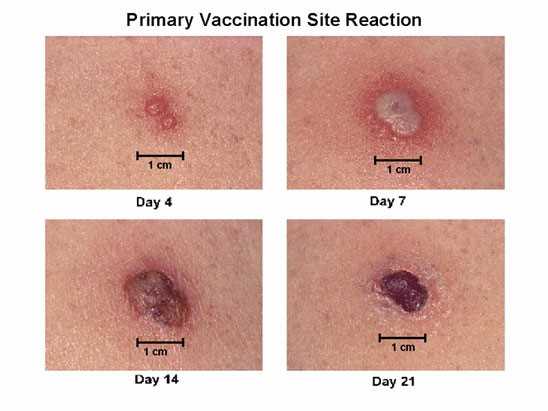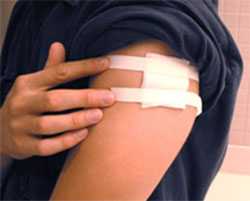Who Should Get Vaccination
After smallpox was eliminated from the world, routine vaccination against smallpox among the general public was stopped because it was no longer needed. However, because of concern that variola virus might be used as an agent of bioterrorism, the U.S. government has stockpiled enough smallpox vaccine to vaccinate everyone who would need it if a smallpox outbreak were to occur.
When there is NO smallpox outbreak, you should get the smallpox vaccine if you:
- Are a lab worker who works with virus that causes smallpox or other viruses that are similar to it.
If you need long-term protection, you may need to get booster vaccinations regularly. To stay protected from smallpox, you should get booster vaccinations every 3 years.
When there IS a smallpox outbreak, you should get the smallpox vaccine if you:
- Are directly exposed to smallpox virus. For example, if you had a prolonged face-to-face contact with someone who has smallpox.
If there is a smallpox outbreak, public health officials will say who else should get the vaccine. CDC works with federal, state, and local officials to prepare for a smallpox outbreak.
Getting the Smallpox Vaccine
The smallpox vaccine is given by a special technique. It is not administered as a “shot” in the way that most other vaccines are. It is given using a two-pronged (bifurcated) needle that is dipped into the vaccine solution. When removed, the needle holds a droplet of the vaccine. The needle is used to prick the skin a number of times in a few seconds. The pricking is not deep, but it will cause a sore spot and one or two drops of blood to form. The vaccine usually is given in the upper arm.
If the vaccination is successful, a red and itchy lesion develops at the vaccine site in 3 to 4 days. In the first week, the lesion becomes a large blister, fills with pus, and begins to drain. During the second week, the lesion begins to dry and a scab forms. The scab falls off in the third week, leaving a small scar.
People who are being vaccinated for the first time have a stronger reaction than those who are being revaccinated. The following pictures show the progression of the site where the vaccine is given in someone who has not gotten the vaccine before.

Caring for the vaccine site
Because the vaccinia virus is live, it is important to follow care instructions for the vaccination site. You can spread the vaccinia virus by touching the vaccination site before it has healed or by touching bandages or clothing that have been in contact with the live virus from the vaccination site.

After you are vaccinated, you must:
- Cover the vaccination site loosely with a piece of gauze held in place with first aid tape or a semi-permeable bandage (one that allows air to flow through, but not fluids).
- Wear a shirt with sleeves that cover the bandage.
- Keep the vaccination site dry.
- If the gauze bandage gets wet, change it right away.
- While bathing, cover your vaccination site with a waterproof bandage, and don’t share towels.
- Change your bandage at least every 3 days. Change it sooner if it gets dirty or wet.
- Wash your hands carefully every time after you touch the vaccination site or anything that might be contaminated with the virus from the vaccination site.
- Try not to touch your vaccination site. Do not let others touch the site or items that have touched it such as bandages, clothes, sheets, or towels.
- Do your own laundry. Use a separate laundry hamper for clothes, towels, sheets, and other items that may come into contact with your vaccination site or pus from the site. Machine wash items that have touched the vaccination site in hot water with detergent and/or bleach.
- Put used bandages in plastic zip bags, then throw them away in the regular trash.
- After the scab falls off, put it in a plastic zip bag and throw it away.
If you do not follow these instructions, you can spread the virus to other parts of your body or to other people.
Related Resources
- Page last reviewed: July 12, 2017
- Page last updated: July 12, 2017
- Content source:


 ShareCompartir
ShareCompartir
